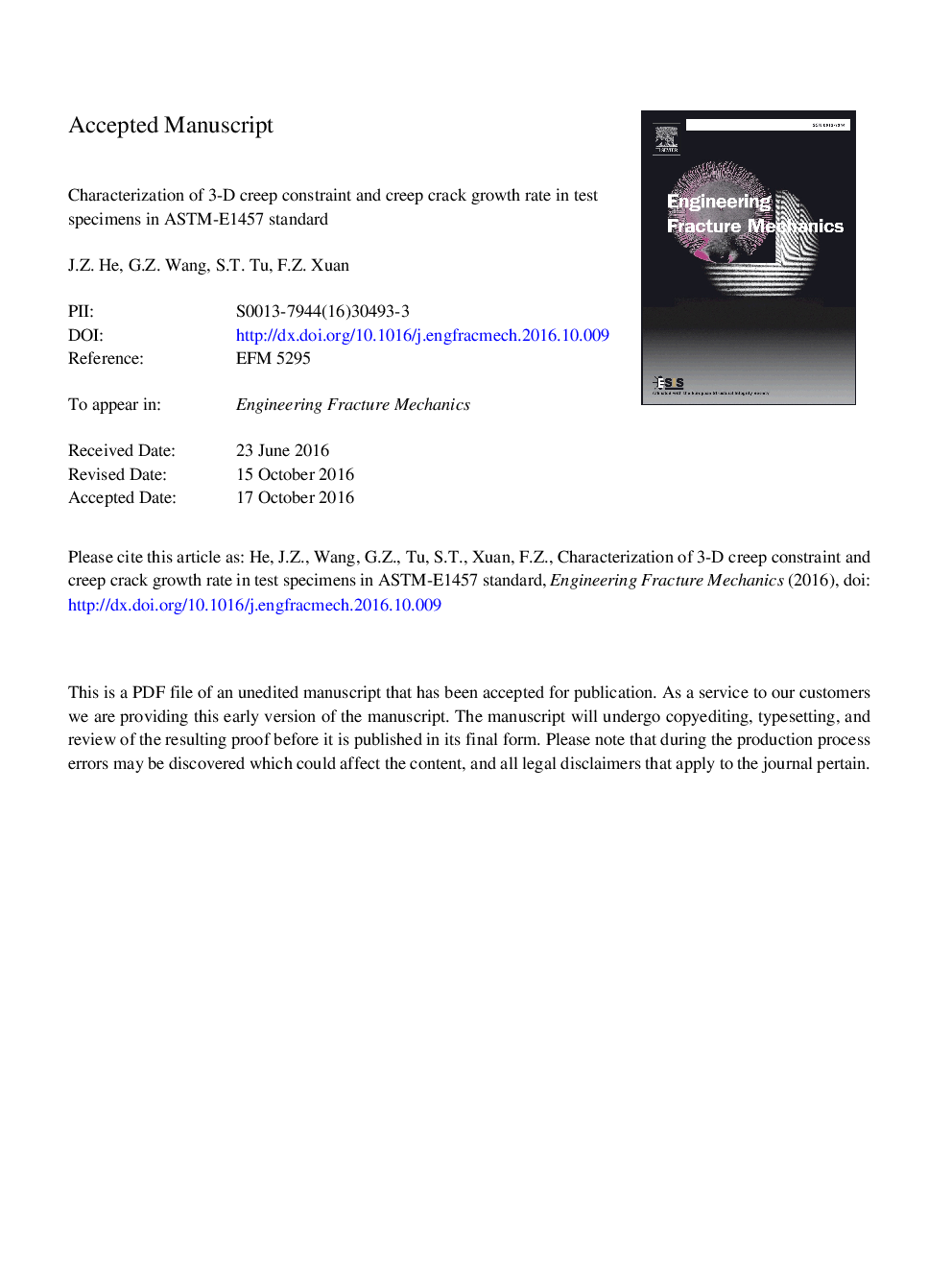| Article ID | Journal | Published Year | Pages | File Type |
|---|---|---|---|---|
| 5014208 | Engineering Fracture Mechanics | 2016 | 48 Pages |
Abstract
Three-dimensional creep constraint of six specimen geometries in ASTM E1457 standard was characterized by using two constraint parameters, and creep crack growth (CCG) rates in these specimens were predicted by using numerical simulations. The results show that the specimens with different geometries and size ranges recommended by ASTM-E1457 have different constraints, thus produce different CCG rate data. With increasing specimen thickness and side-groove depth, the constraint and CCG rates of all specimens increase. It needs to consider constraint effects on CCG rate when predicting component life using laboratory data. The quantitative correlation formulas of CCG rate with creep constraint have been established.
Related Topics
Physical Sciences and Engineering
Engineering
Mechanical Engineering
Authors
J.Z. He, G.Z. Wang, S.T. Tu, F.Z. Xuan,
